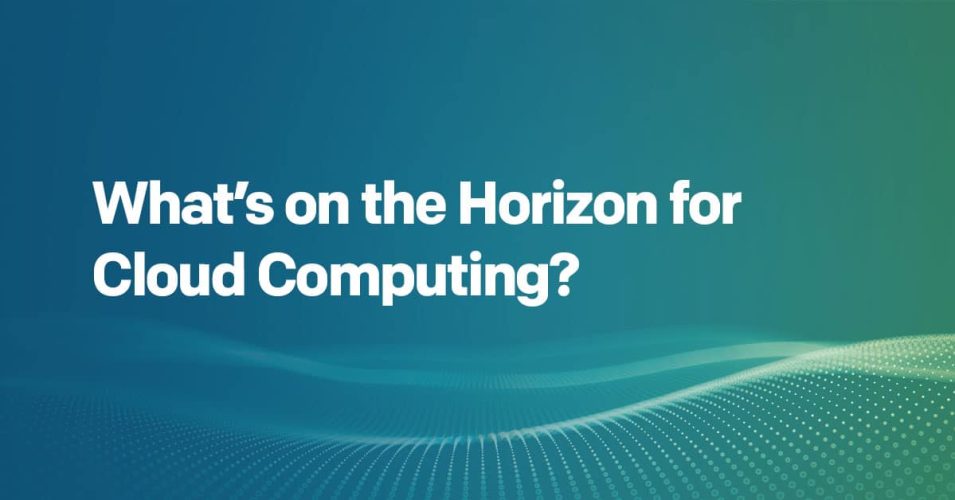READ TIME: 2 MIN

- January 30, 2019
What’s on the Horizon for Cloud Computing?
As cloud technology for small to medium-sized businesses continues to advance, a multi-cloud strategy is becoming the choice for growth-minded companies. This strategy is not without its challenges and some business owners may doubt the ease of managing one data migration and platform let alone multiple instances. The trend in cloud services for business is leveraging the power of a multi-cloud architecture for that competitive advantage in your market.
Defining Multi-Cloud Architecture
The term ‘multi-cloud’ refers to organizations using multiple cloud offerings (usually from different cloud providers) to manage their data. While a hybrid cloud refers specifically to supplementing on-site storage with an off-site cloud, multi-cloud architecture can stand on its own, or serve as part of a larger hybrid infrastructure.
Choosing the Right Vendor
When choosing the right cloud vendor for your business, make sure you have a clear understanding of the technology used. How reliable is the uptime? What’s the failover rate? Are there redundant data centers in case of a local power outage? A combination of private and public cloud instances allows companies to reap the benefits without compromising functionality.
The three most important aspects of functionality are computing, backup, and disaster recovery. This strategy isn’t vendor specific and will allow flexibility with hosted applications. For example, you can link cloud components with application components without restrictions if you later decide to switch providers.
Best Practice with Vendors
Regularly backing up your data in an easily consumable format will reduce the likelihood of future issues, whether accidental or malicious. As well, having security and disaster recovery options are crucial to maintaining business continuity and could mean the difference between being back online in under an hour, or business failure.
Emerging tech trends is another aspect you’ll want to consider when exploring a multi-cloud architecture. Reconfiguring your applications to run on a new platform, is both costly and time consuming. Using open platforms, on the other hand, allows organizations to isolate software and have them running on top of their infrastructure. When it comes time to transition to a new cloud provider – as technologies become more cost effective – those applications are easy to relaunch.
Cloud Providers on the Horizon
Today, there are many cloud providers to choose from and the trend on the horizon suggests even more will enter this growing market. The increase in competitors is sure to drive opportunities for you and your business.
At NexusTek, we can help match the right cloud provider to your mission-critical systems, allowing you to mature your operations while seeing a great return on your investment in IT.
